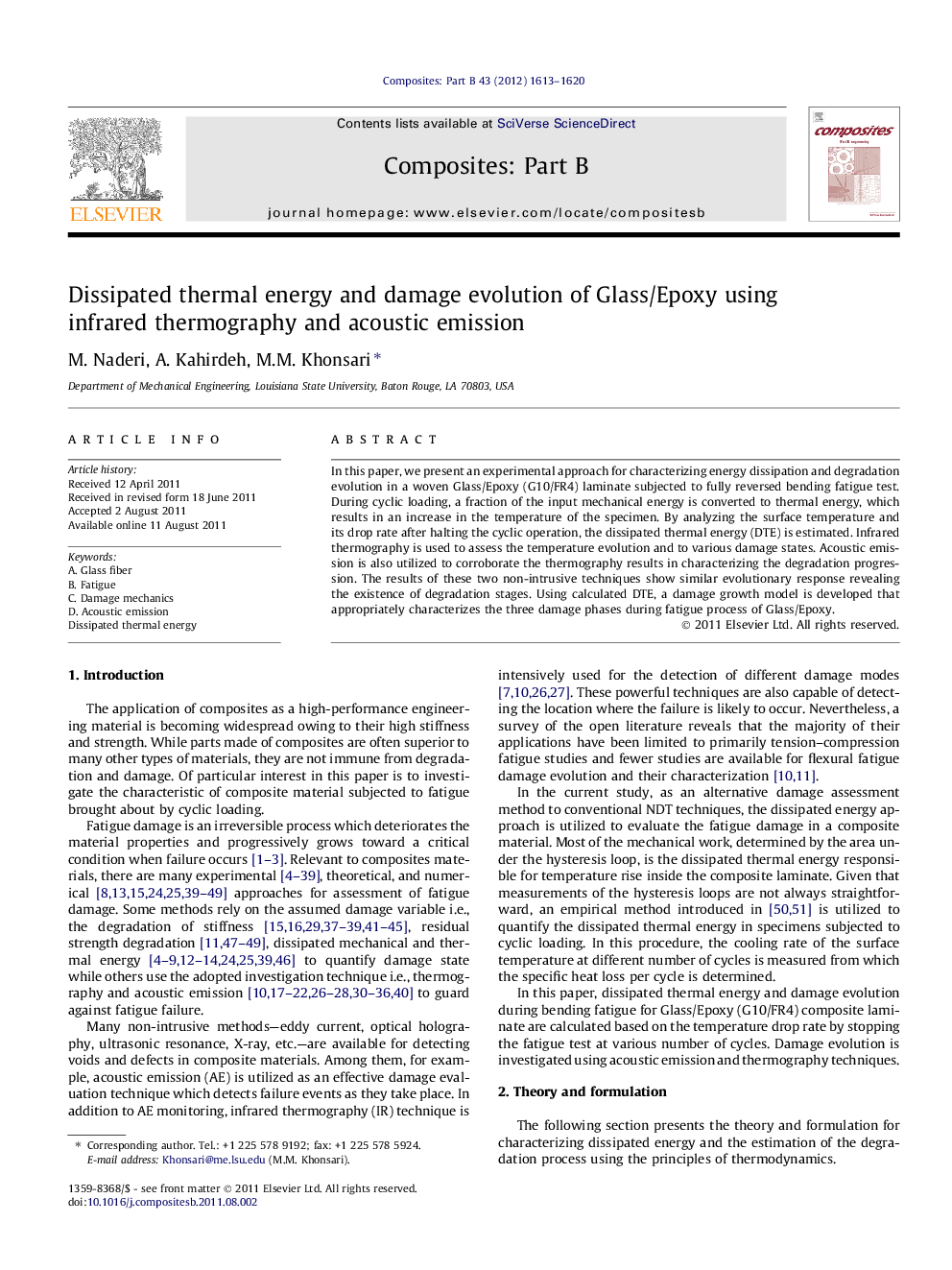| Article ID | Journal | Published Year | Pages | File Type |
|---|---|---|---|---|
| 818676 | Composites Part B: Engineering | 2012 | 8 Pages |
In this paper, we present an experimental approach for characterizing energy dissipation and degradation evolution in a woven Glass/Epoxy (G10/FR4) laminate subjected to fully reversed bending fatigue test. During cyclic loading, a fraction of the input mechanical energy is converted to thermal energy, which results in an increase in the temperature of the specimen. By analyzing the surface temperature and its drop rate after halting the cyclic operation, the dissipated thermal energy (DTE) is estimated. Infrared thermography is used to assess the temperature evolution and to various damage states. Acoustic emission is also utilized to corroborate the thermography results in characterizing the degradation progression. The results of these two non-intrusive techniques show similar evolutionary response revealing the existence of degradation stages. Using calculated DTE, a damage growth model is developed that appropriately characterizes the three damage phases during fatigue process of Glass/Epoxy.
